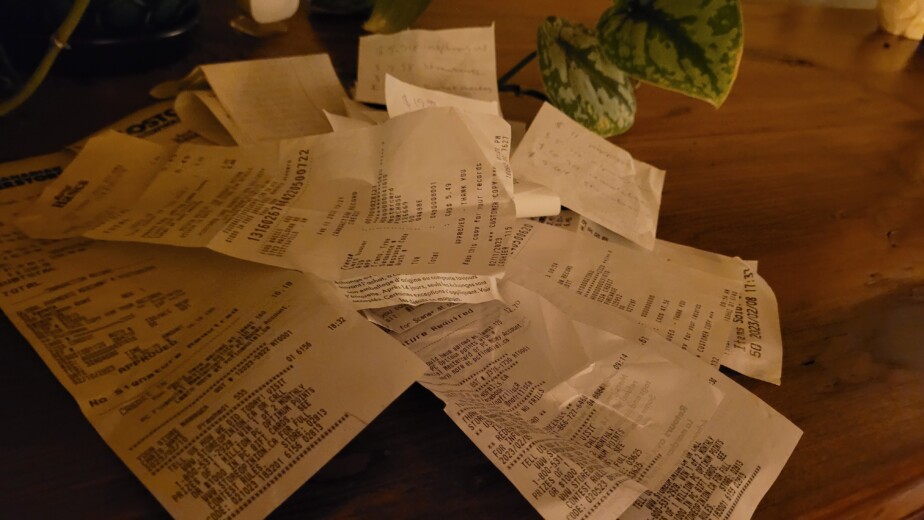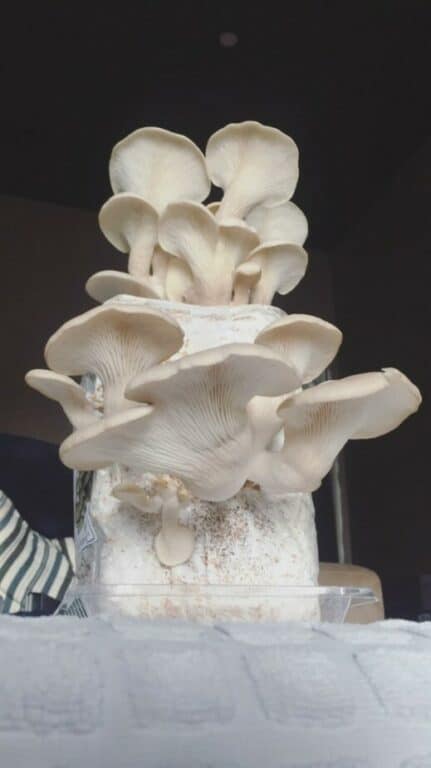This post may contain affiliate links. If you use these links to buy something we may earn a commission. Thanks.
After scanning a month and a half worth of grocery store receipts, it turns out I was wrong about the best food to grow at home to save money! I thought that peppers, tomatoes, zucchini then garlic, and that raspberries, avocados, then mangoes would be our families’ most costly vegetables and fruits.
Our receipts showed that the most expensive vegetables for our family are brussels sprouts, peppers, tomatoes, broccoli, and mushrooms. The most expensive fruits were blueberries, raspberries, strawberries, then grapes. Of course, this would be different for you.
The most economical vegetables and fruits to grow are the ones that personally cost you the most. Your savings revolves around what you actually eat. Your grocery receipts reveal the best food to grow at home to save money since savings hinges less on how much a vegetable costs at the store.
Vegetables range in price from region to region and we all eat varying quantities.
Related: Calculate How Many Plants To Feed Your Family for a Year

Below is a chart that shows the most often purchase fruits and vegetables and how much they cost us for the last month and a half.
| Vegetable Type | Spending ($) |
| Carrots | 7 |
| Sweet potato | 8.50 |
| Blackberries | 32 |
| Tomato | 26 |
| Broccoli | 20 |
| Grapes | 45 |
| Spinach | 5 |
| Cilantro | 6 |
| Cucumbers | 5.50 |
| Brussels sprouts | 27 |
| Blueberries | 59 |
| Raspberries | 53 |
| Mushrooms | 18 |
| Avocados | 15 |
| Asparagus | 15 |
| Strawberries | 44 |
| Garlic | 12 |
| Sweet potato | 13 |
| Peppers | 20.50 |
| Zucchini | 8 |
| Mango | 32 |
It took me 10 minutes to scan through about two dozen receipts and record growable vegetables for my climate with the cost onto this chart.
So it isn’t hard or time-consuming to figure out the best crops for you to grow by looking back at some receipts.
The next question is; how much should you grow to yield what you need?
I’ll tell you exactly how to calculate how many crops to grow for an ideal harvest in my newsletter.
You can sign up below:
And—if money wasn’t a question, what vegetables or fruits would you buy?
What don’t you currently buy (to avoid spending money) that you can grow instead?
We would definitely eat basil, lots of cauliflower, peas, arugula, more asparagus, more zucchini, peaches, cherries, and more berries.
If cost wasn’t a thing, over a 6-week period, we would love to eat: 20 packets worth of basil, 6 heads of cauliflower, 1500g of peas, 3 containers of arugula, 8 bundles of asparagus, 20 zucchini, 8 bags of brussels sprouts, 24 containers of mushrooms, 20 sweet peppers, 20 hot peppers, 40 peaches, 4 bags of cherries, 20 pints of raspberries, 20 pints of blueberries, 15 containers of strawberries, 3 bags of grapes, 10 pints of blackberries. . .
For us, these aren’t crazy numbers! We really do eat nothing but fruits, vegetables, starches, and nuts.
We would ideally grow avocado and mangoes too, but our climate, zones 5, isn’t realistic for those.
So the best crops for us to grow and the amount of money we would save at the store by doing so, in total, would be:
| Item | Cost (quantity x our store prices) |
| Brussell Sprouts – 8 bags | $32 |
| Peppers – 40 total | $23 |
| Tomatoes – 2 containers cherry, 6 vines | $46 |
| Broccoli – 6-10 heads | $24-$40 |
| Mushrooms – 24 containers | $96 |
| Basil – 20 packets | $60 |
| Cauliflower – 6 heads | $36 |
| Peas – 1500g | $10 |
| Arugula – 3 containers | $18 |
| Asparagus – 8 bundles | $24 |
| Zucchini – 20 | $37 |
| Item | Cost (quantity x our store prices) |
| Blueberries – 20 pints | $100 |
| Raspberries – 20 pints | $120 |
| Strawberries – 15 containers | $45 |
| Grapes – 3 bags | $30 |
| Peaches – 40 | $40 |
| Cherries – 4 bags | $56 |
| Blackberries – 10 pints | $24 |
This article was originally published on foodforestliving.com. If it is now published on any other site, it was done without permission from the copyright owner.
So I am saying that we would desire to eat: $406-$422 worth of vegetables and $415 worth of fruits for one and a half months of food. But we don’t eat all that because it’s too expensive to buy.
With an established garden, we could eat all our favorite fruits and vegetables without needing to spend $406 at the grocery store for just one and a half months of food.
As all of these are seasonal, it would save us for about 3 months when fresh. so over a realistic harvest period, we may save $1000-$1600 while eating out favorite foods.
If we learn to preserve them, grow a year’s worth, and eat them differently from a homemade grocery store (a cellar), we might save eight times the amount (about $6400 a year).
We also save ourselves from harmful pesticides, and less nutrient-dense food, and gain a ton of other priceless benefits.
See: 31 Ways Growing Vegetables is Cheaper Than Buying Them
It would actually cost us thousands of dollars to eat our desired mushrooms. We grow, forage, and love shiitake, chicken of the woods, lion’s mane, puffballs, morels, and oysters.

These gourmet mushrooms are incredibly expensive and difficult to find fresh but we love eating a ton of them. So forage or grow them!
See: What it Costs to Grow Mushrooms (Indoor vs Outdoor)
The start-up cost to grow these would be between $44-$70 in heirloom seed packets to grow the vegetables and about $350 for the perennial fruiting shrubs and trees.
The heirlooms seeds can be re-purchased every year or saved by you and will be forever free after.
The expensive perennial fruiting trees and shrubs will grow and fruit for years to come. If any need replacing they can be propagated and regrown by the multiples for free before they lose their luster.
Strawberries are cheap to buy as starts and can also be propagated or allowed to spread into a large patch.
What is the easiest food to grow at home?
The easiest foods to grow at home are often prolific and reasonably low maintenance.
Garlic, peas, mushrooms, carrots, beans, cabbage, mushrooms, cucumbers, blueberries, raspberries, strawberries, zucchini, basil, peppers, tomatoes then grapes are the easiest crops to grow. That list is ordered from lowest maintenance to higher maintenance and all are very prolific.
From our lists, we’ve had the best success growing peppers, tomatoes, basil, peas, asparagus, mushrooms, blueberries, raspberries, blackberries, strawberries, and grapes.
Beans are a huge staple food for us as well and are very easy to grow. We buy dry beans in bulk which is pretty cheap, so it didn’t make the high cost for our list. If you buy it by the can, you’d spend a lot more than we do.
The easiest ones for you to grow are based on your skill level, experience, soil, and climate.
If you are brand new at gardening, I recommend you start with growing the top most expensive 4 vegetables and 4 fruits. Master them, then revisit your list and add on more variety next season.
Up Next:
Recent Posts
There’s no shortage of full-sun ground covers for zone 4 climates! Each plant in this list can withstand the frigid temperatures and also enjoy the hot sun in summer. Full sun means that a plant...
There's no shortage of full sun ground covers, not even in zone 3! Zone 3 climates offer hot but short-lived summers and very cold winters. So each plant in this list can withstand the frigid...
